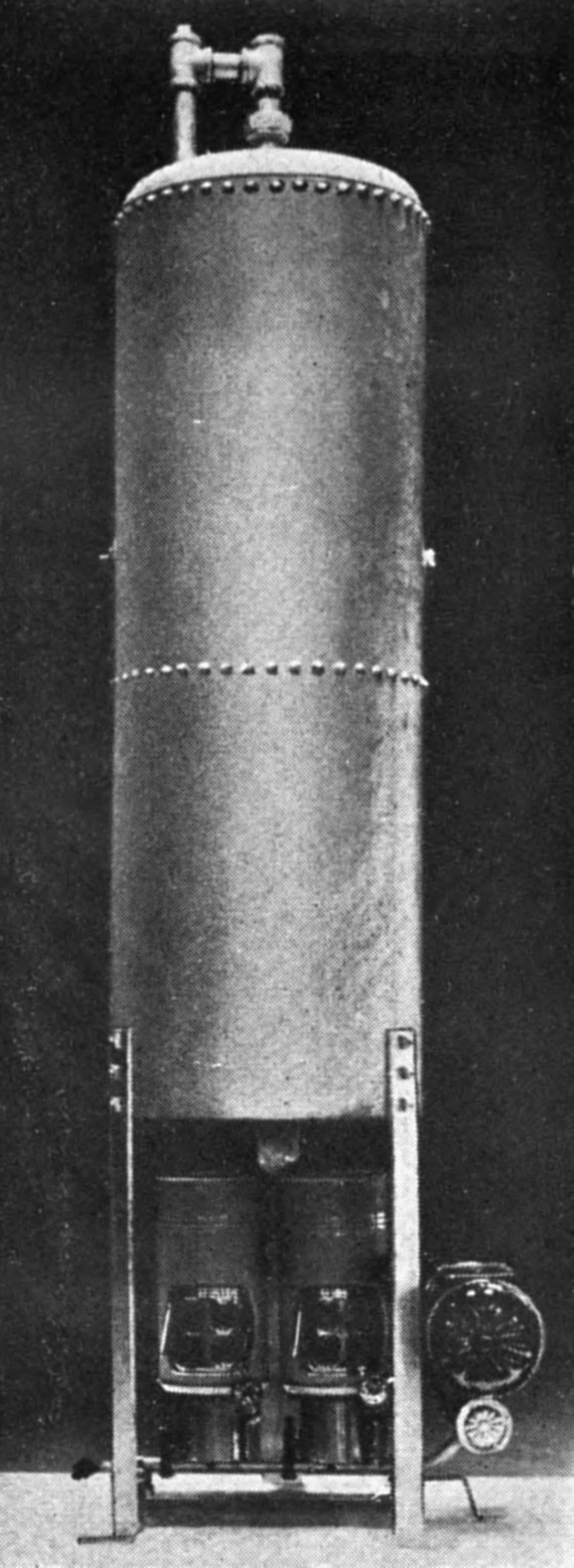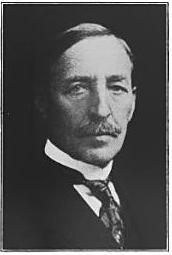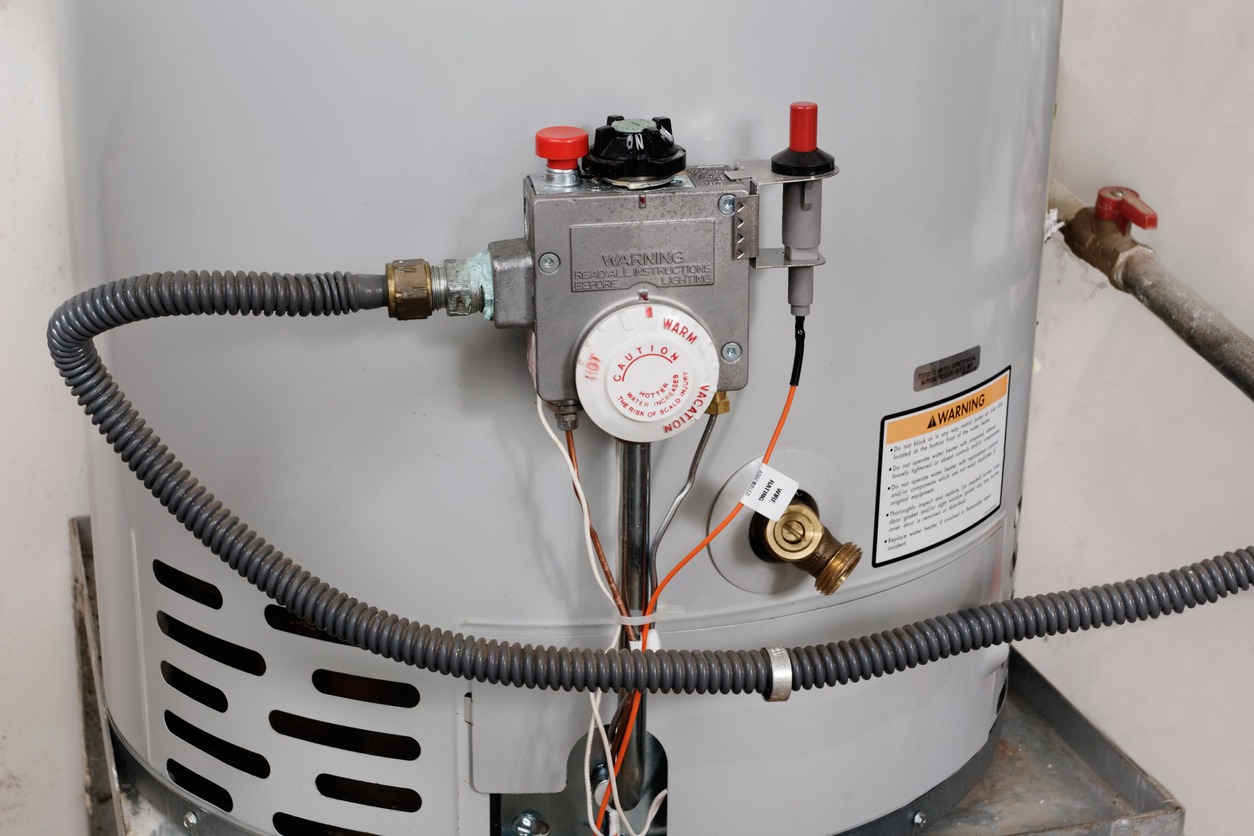The water heater, a staple in modern homes and a cornerstone of contemporary convenience, has a history as fascinating as the evolution of modern technology itself. This long and intriguing journey of water heaters is a testament to human ingenuity and the relentless pursuit of comfort and efficiency. From rudimentary beginnings to sophisticated systems, let’s dive into the captivating history of water heaters.
The water heater, a staple in modern homes and a cornerstone of contemporary convenience, has a history as fascinating as the evolution of modern technology itself. This long and intriguing journey of water heaters is a testament to human ingenuity and the relentless pursuit of comfort and efficiency. From rudimentary beginnings to sophisticated systems, let’s dive into the captivating history of water heaters.
The Early Beginnings
The history of heating water goes back to ancient times. The Greeks and Romans in the first centuries AD used hypocaust systems, where water was heated in large lead boilers and distributed through pipes for bathing and heating purposes. These early methods were rudimentary but set the stage for future developments.
19th Century Innovations
The 19th century marked a period of rapid industrialization and technological innovation, a time when the foundations of modern water heating were laid. This era brought forth significant advancements in water heater technology, revolutionizing how people accessed and used hot water in their daily lives.
Benjamin Waddy Maughan’s Invention
The catalyst for modern water heating systems can be traced back to Benjamin Waddy Maughan, an English painter. In 1868, Maughan invented a device he named the “Geyser,” a gas-fired water heater. This was a significant leap from the primitive methods previously used.
Maughan’s design was innovative but also had its drawbacks. His Geyser heated cold water by passing it through pipes that were heated by gas flames. The water thus heated could be directly used for bathing or washing. The key drawback of Maughan’s design was the lack of a venting system for the gas fumes, making it potentially dangerous.
Edwin Ruud’s Pioneering Contribution
The shortcomings of Maughan’s design led to further innovations by Edwin Ruud. After moving to the United States from Norway, Ruud invented the first automatic storage tank-type gas water heater in 1889. This invention addressed the safety concerns of Maughan’s design and laid the groundwork for modern water heaters.
Ruud’s design incorporated a bottom gas heater and a thermostat, which controlled the water temperature, significantly improving safety and efficiency. This automatic feature was revolutionary, allowing for a constant supply of hot water stored at a safe, predetermined temperature.
The Expansion of Water Heating Technology
The innovations of the 19th century paved the way for the broader adaptation of water heaters. Initially a luxury, hot water gradually became a standard expectation in homes and businesses. The advancements in water heater technology were not isolated but part of a broader wave of innovations in plumbing, heating, and gas and electrical systems. This era saw the cross-pollination of technologies, where improvements in one field spurred advancements in another.
Also there were the “scuttle-a-day” and the “side-arm heater” are terms associated with early water heating systems, each representing a unique approach to the challenge of providing hot water in the era before modern water heaters became widespread.
The term “scuttle-a-day” refers to a type of water heating system that was commonly used in the early 20th century. The name derives from the daily routine of using a scuttle, a type of bucket or container, to manually add coal to the heater. These systems typically featured a small, coal-fired boiler that was used to heat water. The boiler was usually located in the basement of a house. The user would add coal to the boiler once a day (hence the name “scuttle-a-day”), which would heat the water stored in an adjacent tank. The hot water was then piped to various fixtures in the house, such as the kitchen and bathroom, for use in washing and bathing.
The “side-arm heater” is another early type of water heating system. It was a popular and efficient method for heating water in homes before the widespread adoption of modern gas or electric water heaters. This system typically involved a water tank connected to a kitchen stove or a home heating stove. The stove had a water jacket or a heat exchanger built into its side, hence the term “side-arm.” As the stove was used for cooking or heating the room, water circulated between the stove and the storage tank, heating up in the process. This design allowed for dual use of the heat generated for cooking or heating, making it an efficient way to also provide hot water.
Impact on Society and Daily Life
The 19th century was a period of crucial developments in water heater technology, characterized by innovation and problem-solving. The inventions of this era not only addressed the immediate practical needs but also set the stage for future advancements. The work of pioneers like Maughan and Ruud was instrumental in transforming water heaters from novel inventions to essential components of modern households and industries including:
- Quality of Life Improvements: The development of safer and more reliable water heaters had a profound impact on the quality of life. It allowed for more comfortable living conditions and better hygiene, significantly influencing public health.
- Industrial and Commercial Applications: Beyond residential use, the advancements in water heater technology also had significant industrial and commercial applications. Factories, hotels, and public bathhouses began to utilize these systems, marking a shift in how businesses operated and served their customers.
Electric Water Heaters and Expansion
The early 20th century saw the introduction of electric water heaters. With the widespread availability of electricity, these water heaters became popular for their safety and simplicity. However, it was the growth of cities and the demand for residential and commercial hot water systems that truly expanded the market for both gas and electric water heaters.
Post-World War II Developments
The post-World War II era marked significant advancements in water heater technology. The demand for more compact, efficient, and reliable water heaters led to innovations such as glass-lined tanks, which reduced corrosion, and improvements in insulation to reduce heat loss.
The Energy Crisis and Efficiency Innovations
The energy crisis of the 1970s brought a new focus on energy efficiency. This led to the development of more efficient models, including the first solar water heating systems and tankless, on-demand water heaters. These innovations offered significant energy savings by heating water directly without the use of a storage tank.
Entering the 21st Century: Smart Water Heaters
In the 21st century, the evolution of water heaters has accelerated with the integration of digital technology. Smart water heaters, which can be controlled via smartphones and are equipped with self-diagnosing systems, have become increasingly popular. These systems offer improved energy efficiency, convenience, and greater control over water heating.
Common Types of Modern Water Heaters
Over time, water heaters saw their glory. From humble apparatus that was tiring to operate to complex yet fully automatic water heaters. In search of ultimate fuel efficiency and performance, inventors came up with various types of water heaters:
1. Conventional
These are the ones we have already discussed. They come with a sizeable water tank that heats and stores water at the same time. Some heaters heat up water instantly, while others may take some time, depending on the design. They are cost-effective and are the most common type of domestic water heaters.
2. Tank-less
This is a compact type of water heater that comprises super-hot coils. It provides instant hot water on demand, and the supply is near limitless. The only concern about the tank-less type is its cost. They may cost as high as $1,000, while a conventional one is only $500.
3. Heat Pump Water Heater
Also known as hybrid water heaters, the heat pump heaters use up heat from the surroundings to warm up the water. It does not require any external fuel-like gases to do the heating. It takes electricity to function and uses the heat from the ground and air to store hot water.
Although this type is the most fuel-efficient, it will not work in colder regions. Also, it takes up a lot of space to gather enough heat from the ground.
4. Solar Water Heater
The solar water heater uses energy from the sun to heat the water. It consists of collectors and tanks under solar panels and uses the heat from the sun to charge up roof-mounted solar panels, which heats the water in tanks. The installation can be costly, and there is a chance of panels getting hit by lightning but overall, this type of water heater is great for domestic as well as commercial use.
5. Condensing Water Heater
This type of water heater is similar to the conventional one. The only difference is that instead of losing the hot gases by the exit flue, the condensing water heater traps them in a separate compartment and redirects them into a heat exchanger. This way, the heat from these gases is not wasted and is used for heating more water.
The Future of Water Heaters
Looking to the future, the water heater is set to evolve further with advancements in renewable energy and smart home integration. Innovations such as heat pump water heaters, which use electricity to move heat from one place to another instead of generating heat directly, are on the rise. Additionally, the integration of AI and IoT (Internet of Things) technologies promises more efficient, user-friendly, and environmentally friendly water heating solutions.
Conclusion
The history of the water heater is a story of continuous innovation and adaptation. From the early days of rudimentary heating systems to the sophisticated, energy-efficient models of today, water heaters have come a long way. As we look towards a future of renewable energy and smart technology, the evolution of the water heater continues, promising even greater efficiency and convenience in our daily lives. This journey not only reflects the advancements in technology but also the changing needs and values of society, emphasizing the importance of efficiency, safety, and environmental sustainability.



